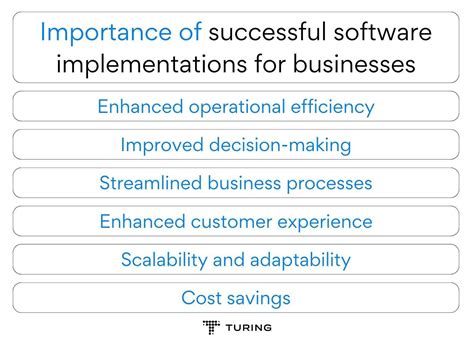Introduction

Data science, the transformative field that harnesses data to unlock valuable insights and drive informed decision-making, has become an indispensable asset for businesses across industries. To ensure successful data science initiatives, it is crucial to define and fulfill clear business requirements. This comprehensive guide will delve into the essential aspects of data science business requirements, empowering organizations to maximize the value of their data-driven endeavors.
Importance of Business Requirements in Data Science
Establishing robust business requirements is the cornerstone of effective data science projects. By aligning data science initiatives with strategic business objectives, organizations can ensure projects are:
- Relevant: Address key business challenges and contribute to organizational growth.
- Measurable: Track progress and demonstrate the impact of data science investments.
- Actionable: Generate actionable insights that guide strategic decision-making.
- Sustainable: Support long-term business goals and enable ongoing value creation.
Defining Data Science Business Requirements
1. Identify Business Objectives and Pain Points
Start by clearly identifying the business objectives that the data science project aims to address. This will determine the data sources, analysis techniques, and desired outcomes.
2. Quantify Impact and Define Metrics
Establish specific, measurable metrics that will track the success of the project. Quantify the expected impact on key business indicators, such as revenue, customer satisfaction, or operational efficiency.
3. Determine Data Availability and Quality
Assess the availability, quality, and accessibility of the data required for the project. Identify potential data sources and evaluate their accuracy, completeness, and relevance.
4. Define Scope and Expectations
Clearly define the scope of the project, including the specific data to be analyzed, models to be developed, and insights to be generated. Communicate expectations to all stakeholders involved.
5. Establish Governance and Ownership
Assign clear roles and responsibilities for managing the project, accessing data, and using insights. Establish data governance policies to ensure transparency, data integrity, and accountability.
Common Mistakes to Avoid in Data Science Business Requirements
- Lack of Alignment: Failing to align data science projects with strategic business objectives.
- Unclear Objectives: Defining ambiguous or poorly defined business requirements.
- Insufficient Data: Underestimating the importance of data availability and quality.
- Overestimation of Capabilities: Overstating the capabilities of data science or expecting unrealistic outcomes.
- Lack of Communication: Poor communication of requirements among stakeholders, leading to misalignment and ineffective execution.
Why Data Science Business Requirements Matter
1. Increased Return on Investment (ROI): Clearly defined business requirements ensure that data science projects are focused on delivering measurable value to the organization.
2. Improved Decision-Making: Data science provides fact-based insights that empower businesses to make better informed decisions, leading to increased agility and competitive advantage.
3. Enhanced Customer Understanding: Data science helps businesses better understand their customers’ needs, behaviors, and preferences. This enables them to deliver personalized experiences and build stronger customer relationships.
4. Optimized Operations: By identifying and addressing operational inefficiencies, data science can streamline processes, reduce costs, and improve productivity.
5. Innovation and Growth: Data science drives innovation by generating new insights and uncovering new opportunities for businesses to grow and differentiate themselves.
Benefits of Effective Data Science Business Requirements
- Reduced project risk: Clear requirements mitigate potential pitfalls by aligning expectations and preventing scope creep.
- Improved resource allocation: Precise requirements help allocate resources efficiently, ensuring that data science teams focus on the highest-impact projects.
- Enhanced stakeholder engagement: Transparent and well-defined requirements foster stakeholder buy-in and collaboration, ensuring successful project execution.
- Faster time to value: By streamlining the project definition process, businesses can accelerate the delivery of valuable insights and realize the benefits of data science sooner.
- Long-term sustainability: Robust requirements provide a solid foundation for ongoing data science initiatives, helping organizations maintain their competitive edge in a data-driven world.
Innovative Strategies for Data Science Business Requirements
- Design Thinking: Employ design thinking methodologies to engage stakeholders, gather user feedback, and iteratively refine business requirements.
- Agile Development: Adopt agile development practices to break projects into smaller increments, enabling iterative requirement gathering and validation.
- Value-Based Prioritization: Use value-based prioritization techniques to identify and prioritize requirements based on their potential impact on business outcomes.
- Data Dictionaries and Glossaries: Create comprehensive data dictionaries and glossaries to ensure consistency in data understanding and prevent misinterpretation.
- Data Catalogs: Implement data catalogs to provide a centralized resource for discovering, understanding, and accessing data used in data science projects.
Conclusion
Data science business requirements are the foundation for successful data science initiatives. By following the best practices outlined in this guide, organizations can ensure that their data science projects are aligned with strategic objectives, deliver measurable value, and drive real-world business outcomes. By embracing a data-driven mindset and adopting innovative strategies, businesses can unlock the transformative power of data science and gain a competitive edge in the modern digital landscape.
Tables
Table 1: Data Science Market Growth (2020-2027)
| Year | Market Size (USD Billion) |
|---|---|
| 2020 | 156.7 |
| 2021 | 236.4 |
| 2022 | 334.7 |
| 2023 | 440.5 |
| 2024 | 560.8 |
| 2025 | 694.2 |
| 2026 | 841.9 |
| 2027 | 1,004.1 |
Source: Forbes (2023)
Table 2: Industries Benefiting from Data Science
| Industry | Applications |
|---|---|
| Healthcare | Disease diagnosis, personalized medicine, drug discovery |
| Finance | Fraud detection, risk assessment, investment optimization |
| Retail | Customer segmentation, demand forecasting, personalized promotions |
| Manufacturing | Predictive maintenance, quality control, process optimization |
| Transportation | Fleet management, route optimization, accident prevention |
Table 3: Common Data Science Business Requirement Types
| Type | Description |
|---|---|
| Functional | Specific tasks or processes that the data science solution must perform |
| Non-functional | Qualities or characteristics of the solution, such as performance, security, or reliability |
| Data | Specifications related to the data used in the project, including data sources, quality, and availability |
| Infrastructure | Requirements for the hardware, software, and network resources needed to support the data science solution |
| Security | Measures to protect data and ensure the confidentiality, integrity, and availability of the solution |
Table 4: Effective Data Science Business Requirement Strategies
| Strategy | Description |
|---|---|
| Stakeholder Engagement | Involve key stakeholders in the requirements gathering process to ensure alignment |
| Data-Driven Insights | Use data to inform and justify business requirements, providing a fact-based foundation |
| Iterative Development | Gather requirements incrementally and evolve them based on feedback and learnings |
| Risk Assessment | Identify potential risks associated with the data science project and develop mitigation strategies |
| Continuous Improvement | Establish processes for ongoing review and refinement of business requirements to ensure alignment with evolving business needs |
